Barnett Newman: A Never Ending Shape has a Never Ending History
On March 21st, the Untitled Etching I by Barnett Newman will be up for sale at Christie’s, London.
Barnett Newman was an American artist, commonly known for his magnificent paintings labeled by his signature: the zip. He started his career in the early 30s, embracing the surrealist art, which he practices during his first years and then decided to disrupt every painting he had made to start all over again.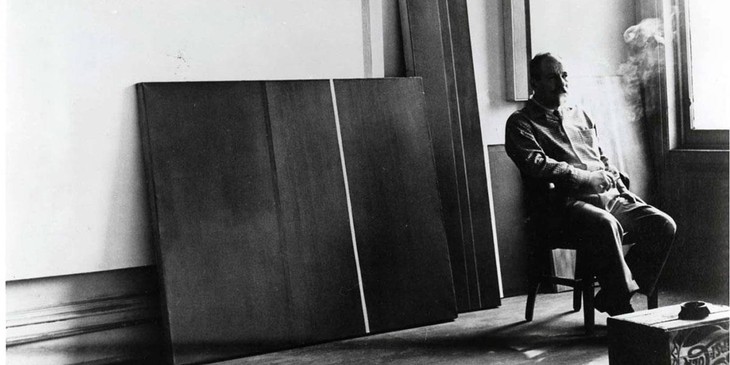
Barnett Newman in his studio © Barnett Newman Foundation
The new starting point had been represented by his commitment to curatorship and to the Betty Parson Gallery. He matured the deep idea of recovering an American history which was able to connect the North and the South under the same unique identity. Barnett Newman as a man and as an artist wasn’t able to identify himself in the well established academic art, he needed something different and powerful, a connection with life in the deepest and most mystic way. He empathized with Native American art, especially with Indian works of art and the Kwakiutl artist paintings. The primitive matrix had a remarkable influence on him, and it was crucial for creating art that represents and defines the sublime and terrible link between man and nature, an art which defines not just an abstract shape, but a living form. The approach with this type of culture was partially promoted by the cultural environment in New York City that, in 1930, became a booming center of primitive art exhibitions.
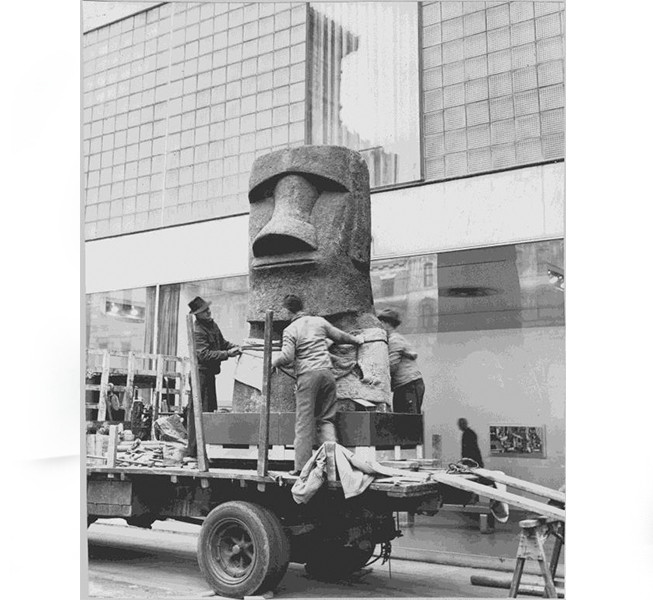
Building the exhibition Indian Art of the United States at MoMA, 1941. © MoMA
In 1944, at the Wakefield Gallery of New York, on the invitation of Betty Parson, Barnett Newman presented the Pre-Columbian Stone Sculpture. He decided to take into consideration only the sculpture media. The creation of a subject in stone testifies, according to Newman’s idea, the tenacity of the primitive man who needs to represent his gods. The artist and therefore, the primitive man, is a warrior who shapes matter despite the hard and not easily malleable surface. The primitive man becomes a myth, an example to follow.
The paintings as Adam (1951), Gea (1944), Euclydian Abyss and Genesis (1946) and the series of fourteen paintings The Station of The Cross (1958 - 1966) manifest the desire of giving form through the use of stories well rooted in the cultural heritage to a never-ending action: the creation.
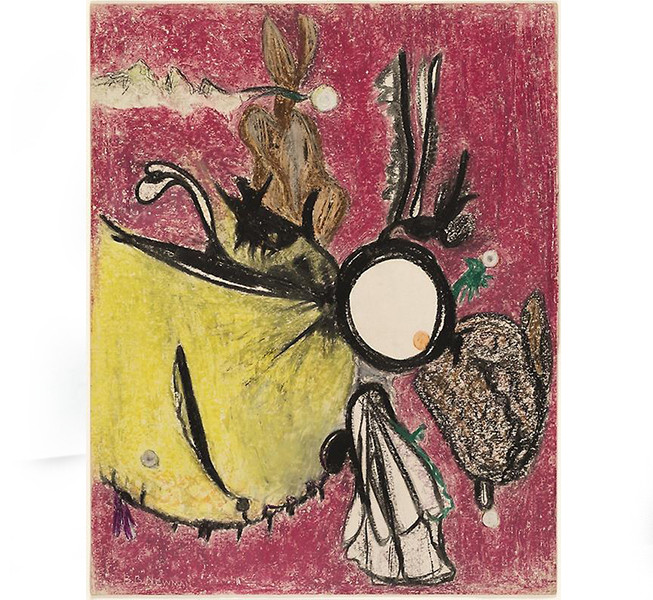
Barnett Newman, Gea, 1944 © Barnett Newman Foundation
In 1947 Barnett Newman organized Ideographic Picture, an exhibition focused on the powerfulness of ideograph. The exhibition will be considered by Newman as the starting point of his new artistic research.
He invited to attend the exhibition Hans Hoffman, Pietro Lazzari, Boris Margo, Mark Rothko, Clyfford Still, Stamos. Newman himself participated with two works, defying himself as a “new painter”, by breaking the ties with the past and introducing a new art based on plastic pure language.
He built a completely abstract form, symbol of his new creationist consciousness, through two dimensions: verticality and horizontality. The idea presents itself without narrative form used: the idea manifests itself his reality. The exhibition’s catalogue introduces a dialogue, very dear to Newman, about ideographic action:
“ Ideographic – Representing ideas directly and not through the medium of their names; applied specifically to that mode of writing which by means of symbols, figures or hieroglyphics suggests the idea of an object without expressing its name.
Ideograph – A symbol or character painted, written or inscribed, representing an idea” 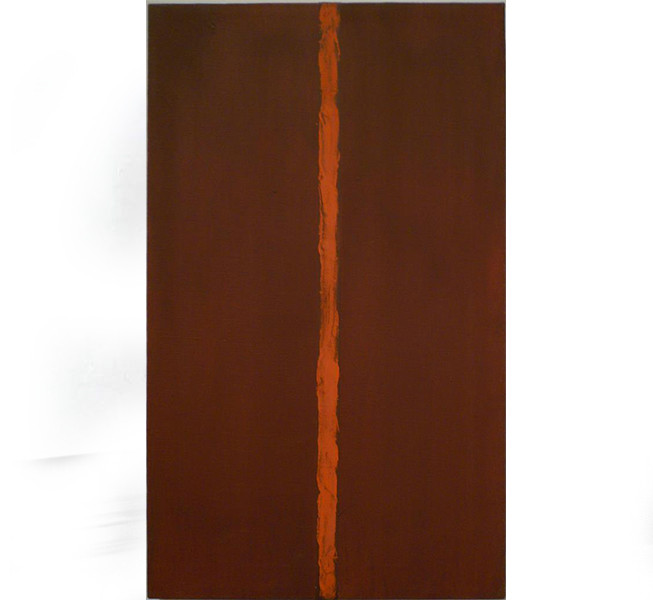
Barnett Newman, Onement, 1941 © Barnett Newman Foundation
This incipit is strictly connected to Kwakiutl paintings. In Newman’s art and in Kwakiutl culture the shape is living and has the power to convey a pure and abstract idea, bearer of the human condition, alone in front of the unknown. The painting connects the spectator with the mystery of life.
Newman decides to begin from the scratch and this brought him to his formal element always recognizable in his paintings: the zip. Through strong hues of yellow and black, he represents the contrast between light and shadow, configuring a boundless abyss with a glimmer of light.
The formal influence of Kwakiutl is evident both in the brush technique with perfect and defined lines able to mark a pictorial surface flat – according to the principle of flatness constantly chased in Newman art - and in the use of primary colors.
The zip, which changes the role of the border no longer at the edges of the painting but inside it, represents the line that separates and unites. The use of the vertical band to define the spatial structure of his work becomes, in reality, his recognizable signature from Onement I to the last unfinished work of 1970. The zip itself promises a parallel and metaphysical reality and through its vertical nature elevates and establishes a relationship between man and the world of ideas.
There is no art which is independent of another: every single work of art has a hidden ancestor and an unpredictable successor. See you soon on Lot-Art.com!
The LOT-ARTeam
LOT-ART | The Art Investment Platform
Other interesting articles
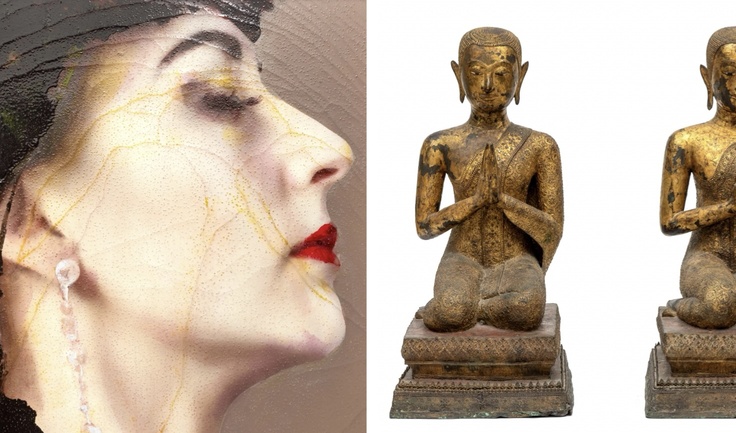
|
Thu Apr 25 2024
Art and Antiques at De Zwaan, AmsterdamDe Zwaan, Amsterdam presents the Spring Art and Antique Sale on April 30th - May 15th. The sale features fine art, Asian art, classic furniture, jewellery, watches & clocks, Tribal art and varia. Discover the Auction Highlights or browse the full catalogue here » SELECTED LOTS LEFT: Walasse Ting (1929-2010) - "Two women with parrots" Watercolour and Gouache, signed with... |
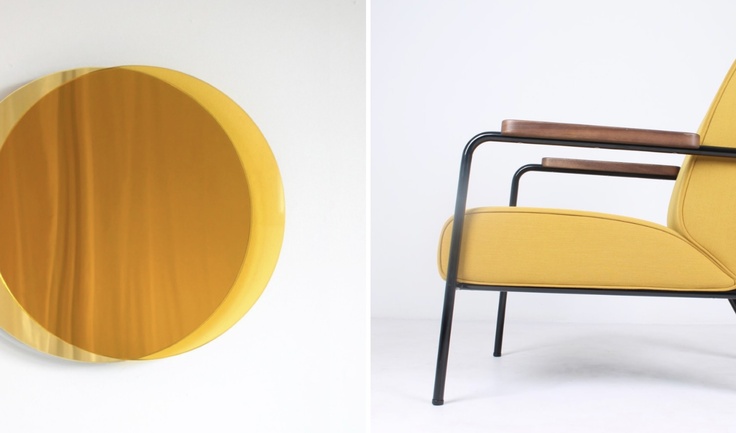
|
Wed Apr 24 2024
Masterly x Catawiki: "Homage" Collection | Exclusive DesignFor the installation at Salone del Mobile 2024, Catawiki and Masterly commissioned contemporary creators to reinterpret design icons. The auction "Homage" - A Tribute in Auction on April 28th is curated by Masterly founder, Nicole Uniquole, and includes the world-famous Eames Lounge Chair reimagined by Stefan Scholten. An auction inspired by the installation at Salone... |
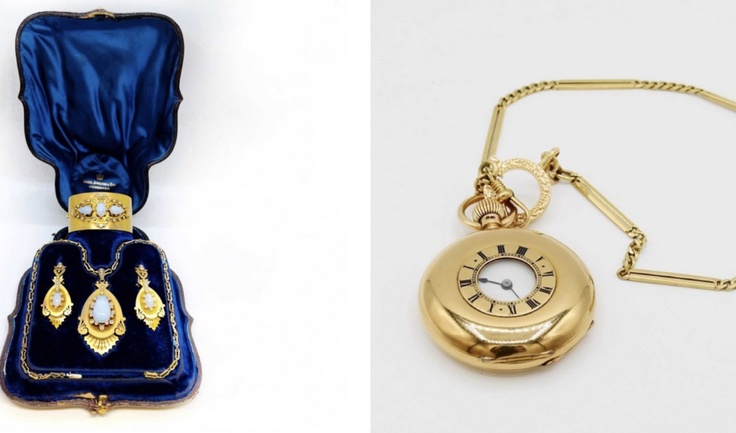
|
Tue Apr 23 2024
A Selection of Jewelry at Casa d'Aste Guidoriccio, ItalyCasa d'Aste Guidoriccio, Italy presents the Auction: "Jewels. A Selection of Jewelry and Precious from Private Collections" on April 30th. Discover the Auction Highlights or browse the full catalogues here » SELECTED LOTS LEFT: Platinum and Diamond Ring, Fabergé Victor Mayer Collection. Diamonds totalling 0.78 ct. Limited series 11/100. See Price Estimate... RIGHT: 750... |
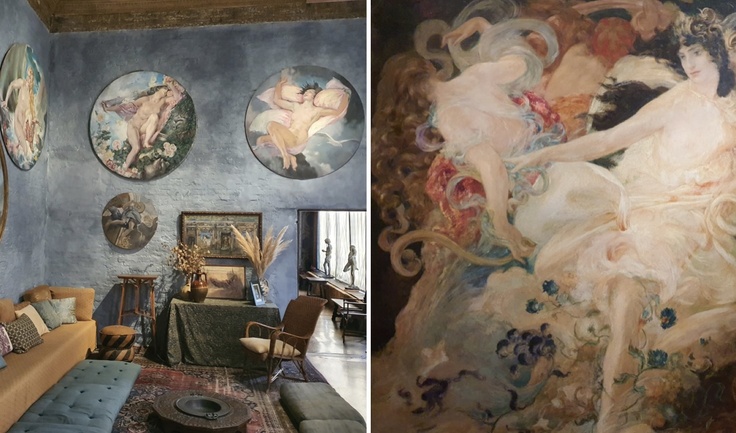
|
Mon Apr 22 2024
Enchantment at Palazzo Fortuny: 'Selva' by Eva Jospin in VeniceLEFT: Photograph of the Mariano Fortuny Y Madrazo Museum; RIGHT: Wagnerian Cycle. Parsifal. The Flower Maidens, Mariano Fortuny y Madrazo, 1896 Mariano Fortuny y Madrazo, born in Granada in 1871, was a renowned Spanish artist celebrated for his innovative contributions in the realms of fashion, photography, and lighting design. Fortuny gained global fame for the... |